In which I dig dig dig dig dig the whole day through. I’m calling this Part Two rather than Day Two as days two, three and four merged together into an unholy flurry of digging, making fresh shovels by torchlight, then digging some more. I’m building Kobold Hall from the Fourth Edition DMG inside Minecraft, and developing a healthy respect for Dwarves along the way.
Already I’m learning more lessons about D&D, courtesy of Minecraft. Here’s a handful to chew on until the next part of this little escapade.
As the Creeper blew up my lovely mud hut on the first night (taking Me Number One with it), first order of business was replacing that with a stone hut.
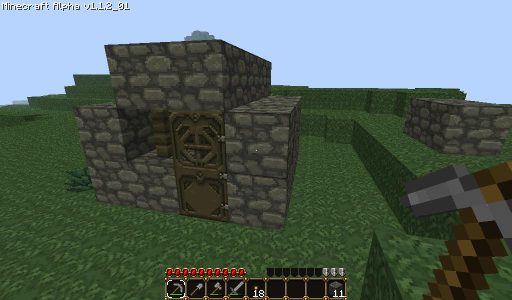 Ha! You’re not going to catch me again, evil Creeper fiend!
Ha! You’re not going to catch me again, evil Creeper fiend!
On with the show.
So Much Soil!
When digging close to the surface there’s a seemingly unending amount of soil to plough through, and a dearth of good honest stone. That means I needed to begin hollowing out the lower section just to get the stone required to fashion this section. It’s easy to see why dungeons get so deep with each lower level being carved out to get the raw materials needed for the one above. Dungeon mining is infinite! Who knew?
All of this soil has to go somewhere, and in the D&D world that means (unless you want to keep dirt in your Bag of Holding) there’s most likely a huge artificial hill beside every dungeon construction – or a chain of hills surrounding the dig to make ideal sites for watchtowers. My mental image of the “perfect” Dungeon is no longer one located underneath a ruined castle on a hill (ironically, because that’s pretty much what Kobold Hall is), but of a Dungeon built on a level patch of ground surrounded by artificial hills topped with crumbling watchtowers. Darn. I’m so going to have to design that sucker now.
That’s just a small part of the soil I’ve excavated so far, stacked up just to show you how much earth moving a dungeon construction involves.
Dungeons Are Big!
One of the fun parts of this project comes from making the design decisions that will affect the whole look of the dungeon. I decide that the first part (Encounter One, to the stairs going down) should be low ceiling’d and pretty cramped. There’s a reason why Kobolds like it, and this is it. The taller races just feel the claustrophobia rushing in. As this part of the dungeon is so close to the surface, I also give it a very weathered look with mud-splattered walls and moss growing among the stonework on the floor. The oh-so-deadly pool is deceptively still and almost even looks like it could bear an adventurer’s weight. More fool anyone who tries it however as they’ll slip ‘neath the green muddy waters with ne’er a ripple.
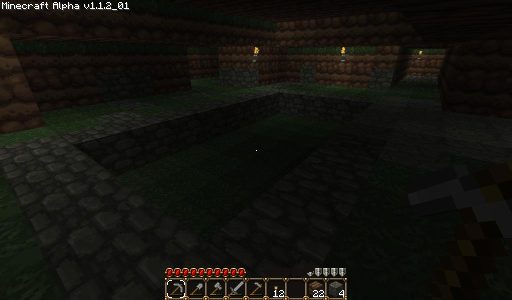 ‘Ware the green slimy Pool of Doom!
‘Ware the green slimy Pool of Doom!
Kobold Hall isn’t exactly what you’d call a mega-dungeon. Heck, it’s essentially just 5 Encounters strung together Delve-style made out of your bog-standard dungeon tiles. Even so, this place is bloody huge! Actually being able to see the layout in 3D to scale with my hard working Minecraft avatar, it’s clear that our (ok, my) perspective on dungeons is all wrong. The low ceiling makes this level of Kobold Hall feel oppressive, but that back wall is a good distance away. The main area has plenty of space to swing a fair number of cats inside and still have a chance of missing dodging Kobolds. Not, of course, that cats are particularly effective as weapons. Use them at your peril.
This is just the area for the first Encounter! More on what all this space means, below. In short though, Dungeons are a lot bigger than you picture them. And by you, I mean me.
All the remains of the ruined manor, above ground
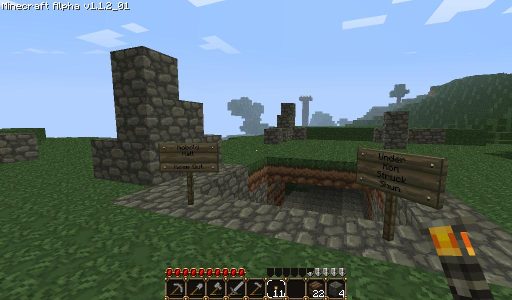 Entering the Dungeon of Kobold Hall
Entering the Dungeon of Kobold Hall
The side room, home to two Kobold Skirmishers
Down the corridor back toward the main room
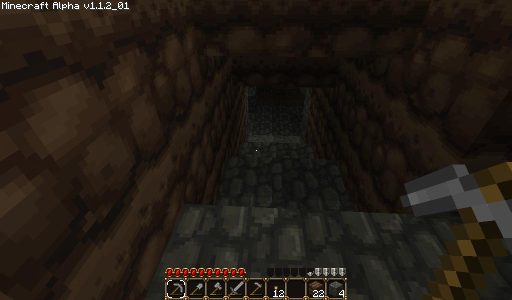 …and stairs down to the next Encounter area. Phew!
…and stairs down to the next Encounter area. Phew!
That’s a LOT of floorspace! I know. I dug it.
Dungeons Are Dark!
This is what the first layer looks like from the entrance with Torches handily placed on the walls.
This is what it looks like with just a Torch by your side.
‘Nuff said?
You say Encounter, I say Encounter
This topmost part of the dungeon ‘neath the ruins of the Hall is home to what is commonly known as “Encounter One”. It’s a fun little battle between Our Heroes and a fair number of Kobolds – but look again. The combat itself is spread over the main room, a smaller area to the side, an anteroom (when a room and an anteroom meet, do they explode?) and a corridor behind a portcullis. In pre-4e terms this would have been 3 or 4 separate encounters (small “E”) with each room or zone having its own Challenge Rating approved XP value.
In 4e, this entire section is one Encounter (big “E”), and the monsters can spread out, work tactically and generally fight like their know what they’re doing instead of waiting patiently in their rooms until the PCs open the door. 4e Encounters are a much better, more realistic model when designed properly. Too bad we’ve seen so many 4e adventures (from WoTC themselves, no less) where this isn’t the case.
Thankfully though, Kobold Hall is a good example of single-session adventure and encounter design done right, and it’s right inside the DMG itself.
When I release Kobold Hall as a full download for Minecraft and/or host it up on a server someplace, I encourage you to walk the rooms and get a feel for how those Encounters could play out. It’ll make you a better DM, I swear.
Just watch out for the monsters!
Even The Littlest Dungeon Can Be Deep!
Even though it takes 4 cubes to make a 5′ square, I decided to make each step down a one cube (2.5′) drop. If I hadn’t even this little Dungeon would have ended up deep underground – I’d never finish it from the sheer amount of digging required.
Consider this: each staircase in this dungeon is 10′ or 15′ long. If I’d also made it the same amount deep (a 45 degree drop), the final layer of this one first level mini-dungeon would be over 50′ below the surface. That might not sound a lot, with my fresh Minecraft-inspired perspective, it is! It’s the height of two houses stacked one on top of another. That deep, we should be into 2nd or 3rd level territory to my mind.This should be nothing more than a fun first-time romp for beginner GMs and players, not an expedition into the pits of the earth. Those can come later.
I like that Kobold Hall delineates the different Encounter areas by depth. It gives the players a feeling of progression where each mini-level in the Dungeon brings them greater risk and reward. More should be made of this with each Encounter being treated like a whole ecology in miniature, a self-contained micro-dungeon with the design, layout and function (if not monsters) changing as the Heroes delve further.
More on that when we press on to Encounter Two.
‘Till then!

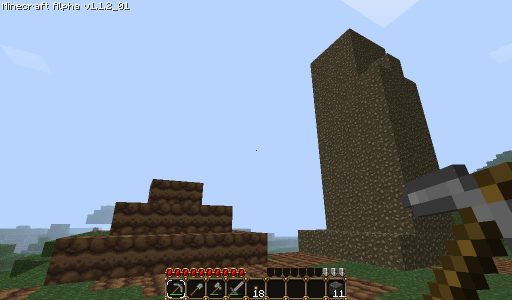
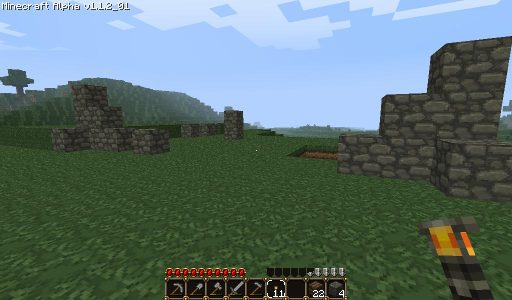
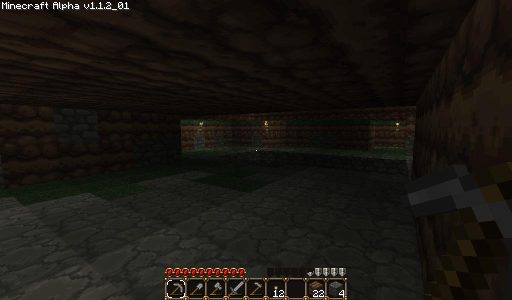
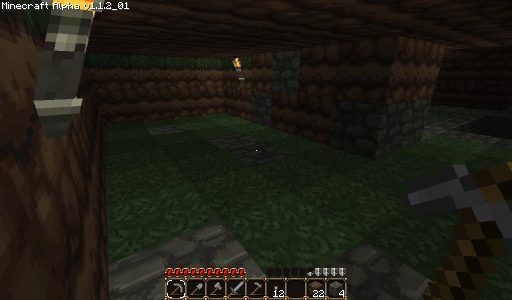
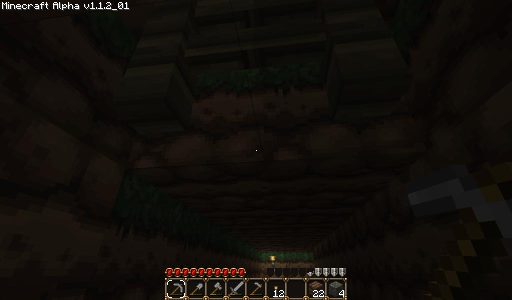
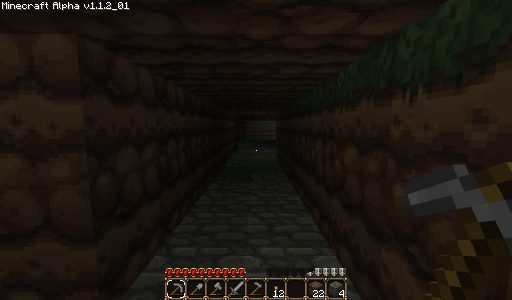
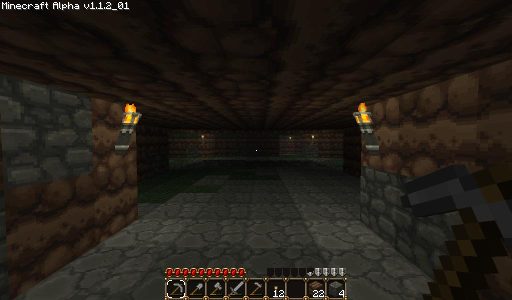
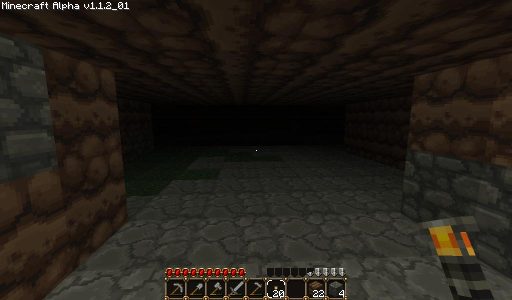



This is truly breathtaking. *gasp* When all the chatter started about Minecraft, I had no idea what it was about. (To be honest, I still don’t.)
But if this is the result: a visceral, oppressive, narrow hallways, deep and dark, true-dungeon experience, it is quite simply the greatest technology since… I don’t know, the MP3 player!
Excessive plaudits and kudos, all wrapped in bacon.
And once again I think – What a wonderful 3d D&D gametable could be made with Minecraft engine!
It’s Dungeon Tiles of the Future.
That is incredible. . . and you’re right, it really puts all those old dungeons into perspective! Keep up the great work – I’ll be looking forward to seeing how this progresses.
Minecraft is starting to look really tempting. . .
Many thanks, all! Stay tuned for part three, Real Soon.
@Dixon Minecraft is one of those games that is pretty much whatever you want it to be. If you want to set up home and create a farm, you can. If you want to explore caves and dungeons, it’s there. If you want to go monster hunting by moonlight, build a railroad, construct all of the seven wonders of the ancient world or a viking village, you can. As it’s both multiplayer and single player, you be play with as many or as few people as you want, and even host your own server should you choose.
It’s like LEGO meets LOST. With Zombies.
Something like that, anyway.
@Snarls-at-Fleas One of these days I’m going to pull together a load of monster skins and get some Minecraft players to dress their avatars up as dungeon denizens so that another bunch can play the heroes.
Virtual LARP, anyone? :D
@Xarathos Be tempted! I’ll go so far as to say it’s the second best game I’ve ever played, ever (after Elite, of course).
This is epic, I’ve been thinking about doing something like this but have yet to do so because of extreme laziness. I have two questions for you.
What made you opt for the 4×4 blocks = 5′ (it’s a good reproduction, just curious as to what made that your final decision)
Also, what version of minecraft are you running? Did I miss an update? My UI doesn’t look like that at all…
Thanks, Jerry.
I’m using doku’s RPG texture pack – this gives the UI that wonderful look as well as retexturing all of the blocks.
A single block as a 5′ square was much too small – they barely come up to waist height, while using 2×2 seems spot on. It also gives me a bit of flexibility when it comes to placement and design – for example, I could craft a spiral pillar or a chair out of 2×2 blocks where that just wouldn’t be possible with just a single block.
Hope this has inspired you to design dungeons too :D
Minecraft might even make a good D&D mapping tool. It’s interesting to design from a first-person perspective. You can use a Minecraft mapping tool to generate a top-down map when you’re done.
It forces you to consider realistic features, like lighting, defensibility, and material constraints. Dwarf Fortress is even more realistic for modelling a humanoid settlement, as it forces you to consider more realistic circumstances, including food and water supply, food storage and waste extraction.